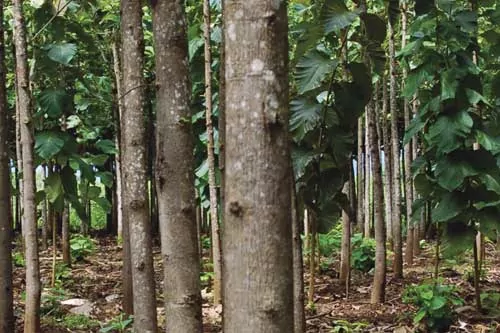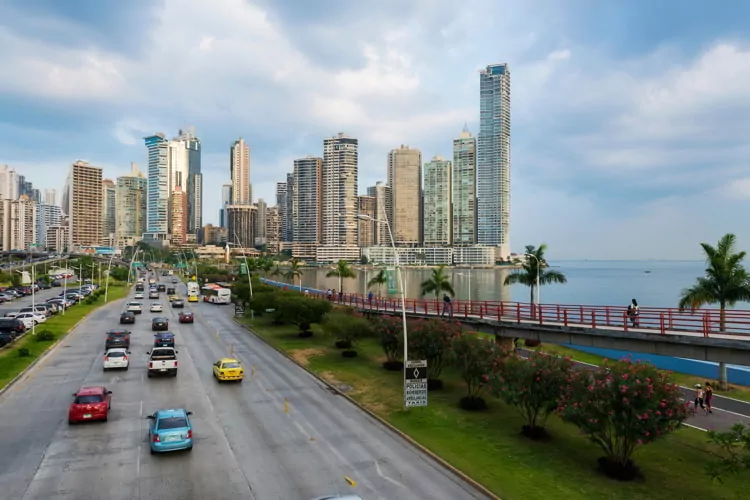
Specific Countries Residency Through Teak Investment In Panama
The World's Easiest And Best Residency Option
The most cost-effective, hassle-free invest-for-residency program we know of available anywhere in the world today is in Panama and takes advantage of this country’s “Specific Countries” residency visa program.
The Specific Countries program was initiated under Ricardo Martinelli’s presidential administration through an executive order that the new president of Panama, Juan Carlos Varela, has so far allowed to remain in place. It is available to citizens of 48 specifically named countries. If you hold a passport for one of the 48 countries on the list, this is the best Panamanian residency option after Panama’s pensionado visa…and, again, in fact, one of the best residency options in the world.
Unlike other residency visa programs, Panama’s Specific Countries program is a one-application process that results in immediate permanent residency. Other options require several applications over several years and grant at first temporary, not permanent residency.
How Do You Qualify?
First, you show that you have at least US$5,000 on deposit in a local bank account. Second, you do one of these three things:
- You show an offer of employment…
- You start a corporation (with the intent of running a business)…
- Or you invest in a piece of real estate (in your own name).
As a foreigner, you may have trouble organizing a job offer (although a primary goal of the new residency option is to make it easier for foreigners to get work permits). Not everyone is interested in starting and operating a business.
Meaning that the most user-friendly way to qualify for this new program is by investing in a piece of Panamanian real estate. No minimum investment amount is formally stated in the decree, but immigration officials are generally said to be looking for a property purchase of at least US$10,000.
That’s not a high hurdle. The trouble is that you’re going to be hard put to find a piece of real estate for sale in this country for anything like US$10,000…or even two or three times that amount.
Investment Residency Program
However, a colleague has put together an offer that allows you to purchase a plot in a Panama teak plantation for US$15,200 (plus an additional US$2,800 for the residency visa costs).
Specifically, for this price, you’re purchasing 1,000 square meters (about one-quarter acre) of planted teak that will be ready for harvest in about 10 years. This is an extremely attractive offer that not only qualifies you for the Specific Countries residency visa program but that also gives you a productive land investment of titled land in your own name.
Annualized returns for the teak, once it’s been harvested, are projected to be between 8.79% and 10.94%. The actual returns will depend on teak prices at the time of harvest as well as whether the trees are sold as logs or lumber (making the initial rough cut to lumber can add value). The lowest projected return of 8.79% is based on today’s teak prices.
This is a fully turn-key opportunity. The plantation owner will continue to manage the land and trees. They’ll organize the harvest and sell the trees.
The investment cost of US$15,200 is the lowest I know of for any investment residency program currently available for any country. The other (still valid) investment residency options in Panama range from US$80,000 (for the reforestation visa) up to US$300,000. And, as I’ve explained, none of the other options (with the exception of the pensionado program) result in immediate permanent residency.
Panama Residency
If Panama residency is something you’ve been contemplating, or if you’re shopping for an easy backup residency to have on the shelf “just in case,” I can’t imagine a better current option if you don’t qualify for Panama’s pensionado program.

Even if you do qualify for the pensionado option, this Specific Countries option is worth consideration. A teak investment is relatively low-risk. The downside is the time it takes for the trees to mature. In this case, however, you’re buying into an already planted farm. In fact, you’re buying trees past the halfway mark to harvest. You’re also buying in well past the danger stage (for fire or insects). Teak is relatively impervious to these risks after three years of growth.
And, as the residency is the real endgame here, the potential return on investment is gravy.
If you’re interested in learning more about how you can take advantage of this low-cost option for obtaining quick, turn-key Panamanian residency, inquire here.
Lief Simon
“Lief, I’m a new subscriber to your newsletter and will be attending your conference in Panama in March. My interest is learning what my investment opportunities might be using the 1031 exchange program.
“I own two four-plexes worth about US$630,000, which I have buyers for. It’s my understanding that these properties can be used in exchange for like properties in a foreign country. Is there any one in your network who can address the pros and cons of trying to put together this type of exchange?
“Looking forward to seeing you in Panama.”
C.S.
Unfortunately, the 1031 like-kind exchange works for U.S. for U.S. properties or foreign for foreign properties only. That is, you can’t take proceeds from U.S. property sales and reinvest them overseas without addressing any associated U.S. capital gains tax event.
Furthermore, when considering a 1031 exchange of foreign property for foreign property, you should take into consideration any tax you may be liable for in the foreign country. In many cases, it’s better not to do an exchange in the interest of deferring U.S. capital gains taxes because you often can offset any U.S. taxes owed with taxes paid in the foreign country.



